위기에 처한 대학
‘보그 인터내셔널 에디터’ 수지 멘키스는 세계에서 가장 유명한 패션 저널리스트다.
<인터내셔널 헤럴드 트리뷴>(현재 <인터내셔널 뉴욕 타임즈>로 이름이 교체됐다)에서 25년 간 패션 비평을
담당한 그녀는 현재 세계 각국의 ‘보그닷컴’을 위해 독점 취재 및 기사를 쓴다.
인터넷을 통한 교육이 치솟는 등록금을 대폭 줄여줄 수 있을까?
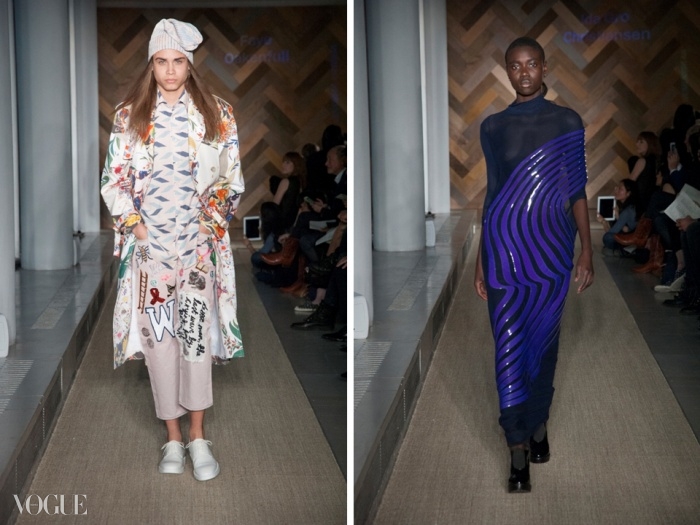
센트럴 세인트 마틴과 그곳의 패션 전공 학생들에게 번개 같은 존재였던 루이스 윌슨 교수가 사망했다는 충격적 소식이 전해지기 전, 그리고 왕립 예술 학교의 패션학과장 웬디 대그워시가 16년간의 교편생활을 접고 은퇴하기로 결정하기 전(현재 영국에서 가장 중요한 패션 학교 중 두 곳은 상당히 당황하고 있다), 이 글은 이미 스튜디오 벽에 붙어 있었다.
영국의 패션 학교들은 현재 위기에 직면해 있다. 존 갈리아노가 세인트 마틴을 졸업한지 정확히 30년이 흐른 지금, 2014 졸업생들은 독창적이고 상상력이 풍부하며 흥미로운 작품들과 함께 학교를 떠났다. 그러나 받아들이기 힘든 현실도 그들과 함께 했다. 산더미 같은 빚 말이다.
등록금과 학자금 대출을 관리하는 법이 2010년에 바뀌면서 영국 교육이 미국 시스템과 동일해지자 현재 똑똑하고 제멋대로였던 택시 기사의 아들인 알렉산더 맥퀸 같은 학생이 대학을 졸업하기 더 힘들어졌다.
현재 전세계 학생들은 갚아야 할 엄청난 학자금과 일자리(어떤 일이든)를 찾아야 한다는, 혹은 사업을 시작하기 위해 추가로 융자를 받아야 한다는 압박감에 직면해 있다.
이런 상황은 토마스 테이트에게 30만 유로(약 4억1,300만원), 그리고 3명의 입상자들에게 각각 10만 유로(약 1억 3,700만원)를 수여한 LVMH 프라이즈의 중요성을 더 강조하고 있다. 다른 시상식들(특히 미국의 CFDA/VOGUE 패션 펀드)은 패션계와 럭셔리 재벌들이 미래를 위해 재능 있는 인재를 찾는데 얼마나 열성적인지 보여준다. 이태리에서도 밀라노의 마에스트로인 조르지오 아르마니가 매 시즌 젊은 인재를 지원하고 있다.

그러나 이 모든 행운의 수상자들에도 불구하고 여전히 너무 많은 디자이너들이 고군분투하고 있다. “모두 그것을 숨기는 것 같아요. 하지만 그게 문제예요. 우린 그저 아주 운이 좋았을 뿐이죠”라고 웬디 대그워시는 패션학도 시절 자신이 지불했던 최소한의 비용을 언급했다.
대그워시는 왕립 예술 학교의 프로그램 책임자이며 여성복 스쿨의 학장이다. 그리고 자신에게 마지막이 된 이번 졸업 컬렉션의 작품들이 정말 심오했다고 자랑스럽게 말했다. 강사들(트리스탄 웨버, 이케 러스트, 그리고 사라 댈러스)의 지도하에 흥미로운 옷감, 뛰어난 니트와 뛰어난 남성복이 많이 등장했다.
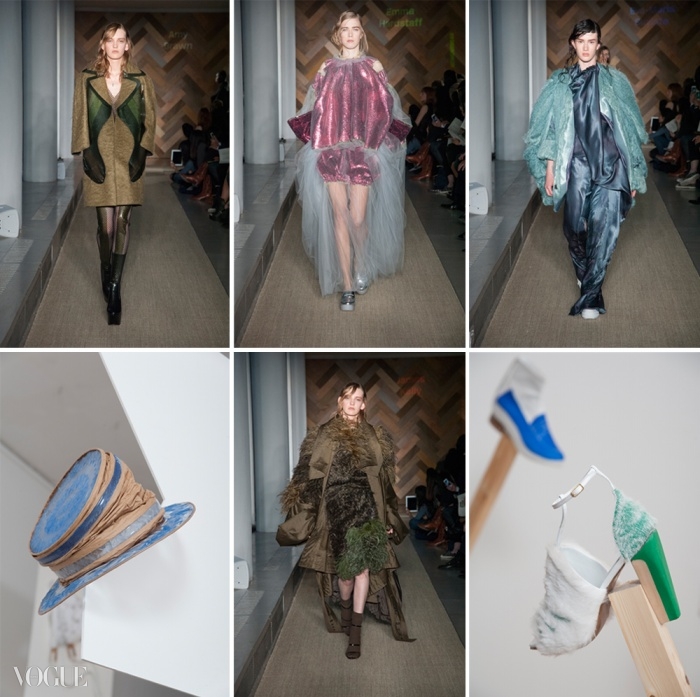
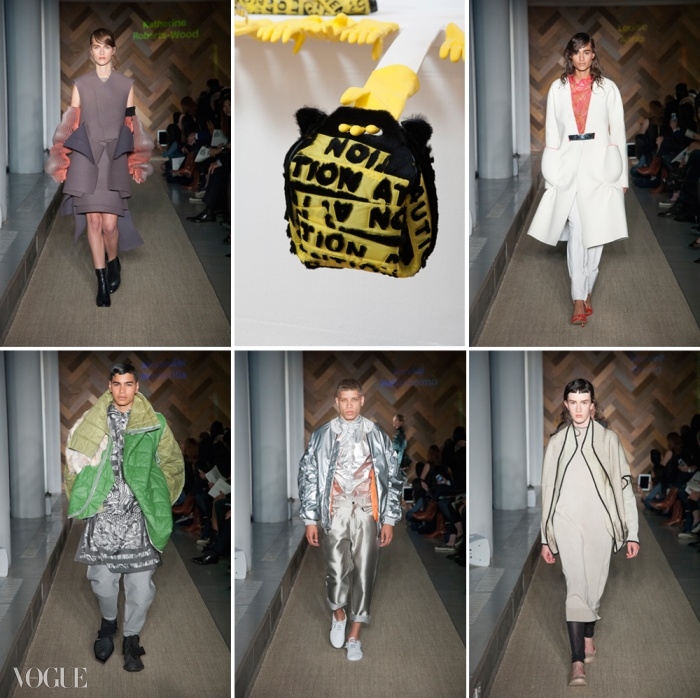

그러나 오시 클락과 잔드라 로즈 같은 전설의 디자이너들을 배출한 예술 학교의 책임자인 그녀는 가장 재능 있는 학생들이 대학을 졸업할 수 있는 유일한 방법은 학비 보조금(장학금) 뿐이라는 걸 인정했다. 그렇지 못한 학생들을 돈을 모으기 위해 허드렛일들을 해야 한다.
LVMH 프라이즈 시상식에 참석한 성공한 많은 왕립 예술 학교 졸업생들 중에는 모자 디자이너 필립 트리시, 친환경 디자이너 크리스토퍼 레번, 니나 리치의 피터 코팽, 그리고 자신의 사업을 구축하는데 성공한 어덤 모랄리오글루가 포함되어 있었다.

“하지만 지금은 패션을 공부하는 게 하나의 도전입니다”라고 RCA 재학 시절 내내 장학금을 받을 정도로 뛰어났던 어덤은 말한다.
내가 마지막으로 루이스 윌슨과 깊은 대화를 나눈 건 전세계 컬렉션들이 끝난 직후 사진가 크리스 무어와의 점심식사 때였다.
우리는 런던 킹스 로드의 새 건물 단지 안에 있는 그레인 스토어에 앉아 있었다. 웅장한 새 캠퍼스는 런던 중심에 있던 낡은 건물의 빽빽한 강의실들과 거리가 멀었다. 그곳은 루이스가 그토록 떠나기 싫어했고 모자 디자이너 스티븐 존스 같은 미래의 패션 스타들이 자유롭게 배회하던 곳이었다.
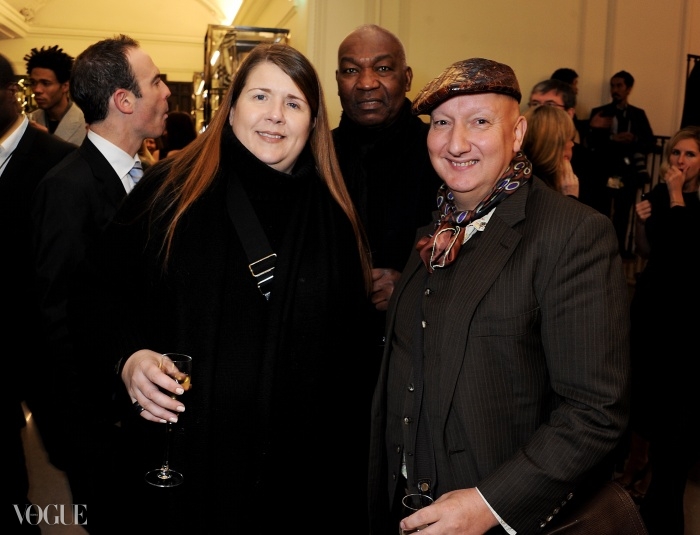
루이스는 대화에 욕설을 더하며 대학 재정에 도움이 되는 외국 학생들의 대거 유입을 비난했다. 외국 학생들은 너무 소심하고 자신들의 문화와 언어에 너무 깊은 뿌리를 두고 있어 그녀가 그들을 잔인한 말로 난도질한 후 그들이 발전하는 모습을 지켜보는 건 불가능했다.
그러나 현재 모든 대학의 외국학생 비율은 높다. 대그워시에 따르면 영국과 그 이외 지역의 교육기관들은 대략 자국에서 자란 학생 1/3, 유럽 학생 1/3, 아시아 학생 1/3을 목표로 한다. 후자와 그 밖의 다른 나라 학생들은 한해 최소한 3만 파운드의 학비를 지불할 수 있는 부유한 부모가 있어야 한다. 외국 학생들이 코스를 마치려면 생활비를 포함해 약 10만 파운드가 필요하다.
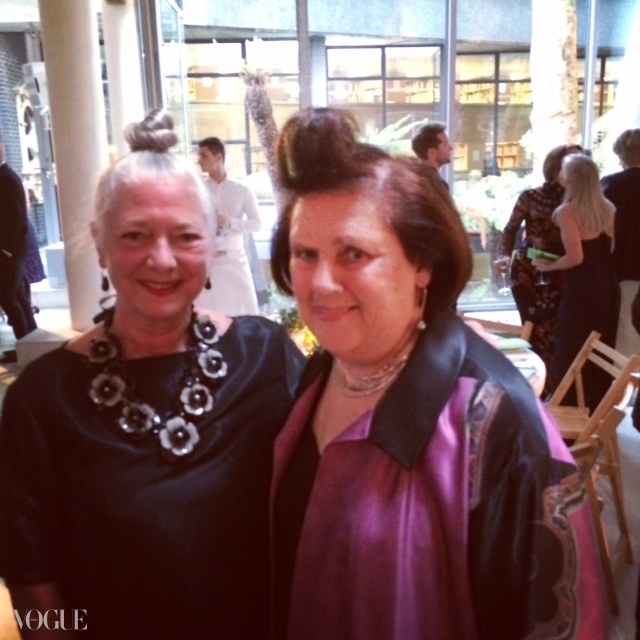
나는 뉴욕 패션 위크 때 매 시즌 샌프란시스코의 미술 아카데미 대학과 그곳에서 열리는 패션쇼를 보러 간 적 있다. 아시아 출신 학생들이 다수였고 그들은 쇼에서 빛을 발했다. 그러나 모든 학생들이 자금을 지원 받거나 아르바이트로 비용을 충당한다.
“제가 세인트 마틴에 다닐 때는 한 학기 학비가 8파운드였어요!”라고 샌프란시스코 대학의 패션 책임 디렉터이자 유명한 패션 일러스트레이터이기도 한 글래디스 페린트 파머(Gladys Perint Palmer)은 1960년대 말 세인트 마틴스의 학비를 언급했다.
1929년 할머니가 설립한 예술 아카데미 대학의 총장인 엘리사 스티븐스에겐 미국에서 가장 큰 시립 아트&디자인 스쿨에 다니는 18,000명의 학부생들과 대학원생들 보다 훨씬 원대한 미래가 기다린다.
목표는 앞으로 5년 동안 학생 수를 10 만 명으로 늘리는 것. 이미 고도로 선진화된 이 대학 디지털 코스의 온라인 수강생들의 숫자는 엄청나게 늘고 있다.

“우리가 이 플랫폼을 구축했을 때 제 목표는 10만 명을 수용하는 거였어요”라고 스티븐스 박사는 말한다. 그녀는 샌프란시스코에 있는 벽돌과 콘크리트로 지은 강의실에서 벗어나 디지털 플랫폼으로의 발전이 가능하다고 믿는다. 그녀는 위스콘신 시골에 사는 아이 엄마나 대만의 똑똑한 청년이 온라인 수업을 듣고 한 학기 동안 캘리포니아 대학에서 실제 수업을 듣는 게 가능하다고 여긴다.
하지만 이것이 정말 패션 교육의 해결책일까? 기술적으로 능숙하고 극도로 모던한 대안적인 온라인 교수진? 학생들은 많은 것을 배울 수 있다. 하지만 교수진과의 일대일 상담, 혹은 캠퍼스에서 쌓은 동지애의 이점은 사라질 것이다.
그러므로 여기 중요한 질문이 있다. 21세기에 컴퓨터가 패션 학교의 비용을 낮추고 가상 스튜디오를 만들 수 있을까? 눈으로 보는 것만큼이나 촉감과 느낌이 중요한 패션계에서 말이다.
전 세계 곳곳에 있는 여러분들의 생각이 궁금하다.
English Ver.
Crisis in college BY SUZY MENKES
Before the shocking news that Professor Louise Wilson, the lightning bolt of Central Saint Martins and its fashion students, had passed away; and before Wendy Dagworthy, the head of fashion at the Royal College of Art, had decided to retire after 16 years, leaving two of the UK’s most important fashion schools rudderless – the writing was already on the studio walls.
Fashion universities in the UK are facing a crisis.
Exactly thirty years since John Galliano graduated from St Martins, the class of 2014 has left college with inventive, imaginative and intriguing work. But also with something much less palatable: a mountain of debt.
Since the law governing tuition fees and student loans changed in 2010, putting English education on a par with the established American system, it is harder than ever to imagine a Lee McQueen, a brilliant, wilful, taxi driver’s son, making it through college today.
Students across the world now find themselves dumped with crippling sums to pay off and under pressure to find a job – any job – or to take out a further loans to try to build a business.
That situation highlights the importance of the LVMH initiative that last week offered 300,000 euros to fashion prize winner Thomas Tate – and a sum of 100,000 euros each to three runners up. Other awards systems, particularly the CFDA Vogue fashion fund in the US, show how committed the fashion industry and its luxury conglomerates are to finding the talent for tomorrow. In Italy, too, Giorgio Armani, the maestro of Milan, is supporting young talent each season.
Yet for all the fortunate fashion winners, there are so many others struggling.
‘Everyone seems to be masking it over – but it is a problem, we were just so lucky,’ says Dagworthy, referring to the minimal cost she faced as a fashion student at the start of her own career.
Dagworthy is the RCA’s Head of Programmes and Dean of School for womenswear and she said that she was proud at the depth of work for the final year show: the interesting fabrics, exceptional knits and exceptional menswear, under the guidance of tutors, Tristan Webber, Ike Rust, and Sarah Dallas.
But the head of an art school that produced legendary designers like Ossie Clark and Zandra Rhodes admitted that the only way her most talented students can get through college now is on bursaries. Others have to take on menial jobs to raise money.
The many successful RCA alumni at last week’s event included milliner Philip Treacy, eco-designerChristopher Raeburn, Nina Ricci’s Peter Copping, and Erdem Moralioğlu who is succeeding in building his own business.
‘But it’s a challenge to study fashion now,’ said Erdem, who was brilliant enough to win scholarships to take him through the RCA years.
The last time I talked in depth to Louise Wilson was shortly after the international collections, at a lunch with my photographer friend Chris Moore.
We sat in The Grain Store in the new complex at London’s King’s Cross. The mighty new campus is far from the warren of rooms in the old building in the city center – the site that Louise was so loath to leave and where future fashion stars like hat-maker Stephen Jones had roamed free.
With her familiar expletives peppering the conversation, Louise railed against the influx of foreign students, helpful for paying the college bills, but too timid, too founded in their own culture and language, for their professor to be able to cut them down brutally- and then watch them flower.
But all colleges now have a high percentage of foreign students. According to Dagworthy, teaching establishments in Great Britain and elsewhere aim roughly for one third home grown students; one third from across Europe; and one third pan Asian. All the latter, and many of the other foreign students, need wealthy parents to afford a minimum of £30,000 fees a year. The overall financial requirement is of foreign students likely to be £100,000 pounds, including the cost of living, by the end of course.
I have been a few times to the Academy of Art University in San Francisco and to the shows it holds each season during New York fashion week. There, the students of Asian origin are in the majority, and they shine at the shows. But all students either are funded or take on part time paying jobs.
‘When I went to Saint Martins it was eight pounds a term!” said Gladys Perint Palmer, the Executive Director of Fashion at the San Francisco University, and also a well-known fashion illustrator. She was referring to charges in the London school in the late 1960′s.
For Elisa Stephens, President of the Academy, established by her grandfather in 1929, there is an even bigger future ahead than the current 18,000 undergraduate and graduate students, who make up the largest private art and design school in the United States.
The goal is to expand over five years to 100,000 students, with the vastly increased numbers coming from on-line students working on the university’s digital courses that are already highly developed.
‘My aim, when we built this platform, was to a capacity of 100,000,’’ says Doctor Stephens, who believes the development from bricks and mortar in a San Francisco location to a digital platform is do-able. In her vision, a mom in rural Wisconsin or a smart guy from Taiwan can do the online course and then participate in the actual Californian college for a semester.
But is this really an answer to fashion education: an alternative on-line faculty that is technically smart and hyper modern? The students might learn a lot, but they would not benefit from one-to-one consultation with teaching staff, nor from the camaraderie of a campus. On the positive side, potential students cut off from higher education by its cost, can digitally develop their talents.
So here is the BIG question. Can the computer cut the cost of fashion schooling and create a virtual studio in a 21st century world – in an industry where touch and feel are as crucial as the look?
I would love to hear your thoughts from across the world.
인스타그램 @suzymenkesvogue
트위터 @SuzyMenkesVogue
페이스북 facebook.com/suzymenkes
최신기사
- 에디터
- 보그 인터내셔널 에디터 / 수지 멘키스(Suzy Menkes)
- 기타
- Courtesy Photos






















